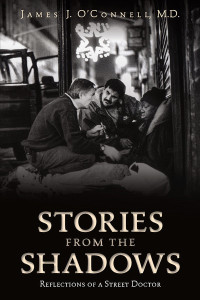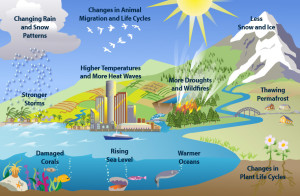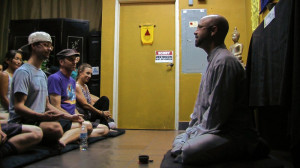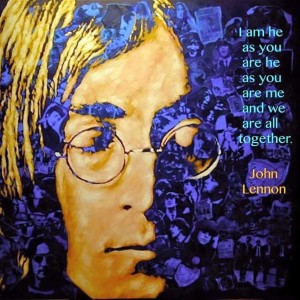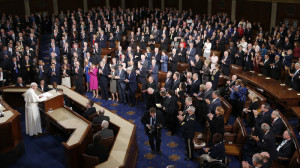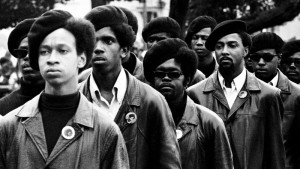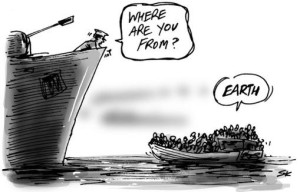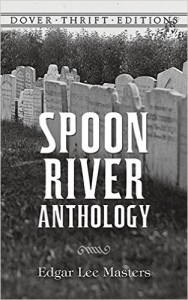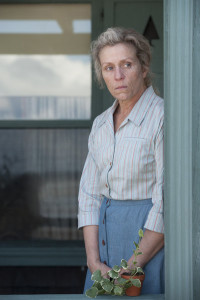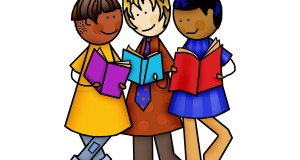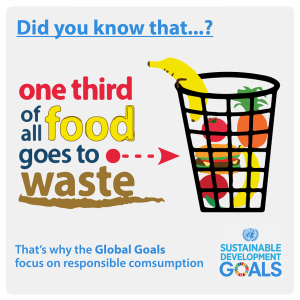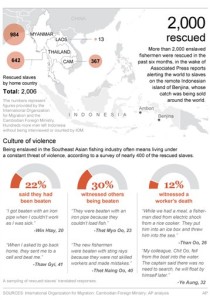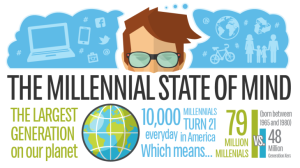Compassion among the homeless.
September 30, 2015NPR/Fresh Air
Tues., Sept. 29th, 2015
http://www.npr.org/templates/transcript/transcript.php?storyId=444214320
In this excerpt, Dr. O’Connell shares a story of a homeless woman, in need of a liver transplant, who makes an unusual, and tender request:
“Stories From The Shadows: Reflections Of A Street Doctor.”
GROSS:You have treated a lot of patients who have died – not necessarily died under your care directly, but eventually died from living on the street. And you write about how some of the shelters do funeral services or memorial services. And I would like you to describe one of the funerals that you’ve attended for a homeless person who you treated that you found especially moving.
O’CONNELL: One woman who was from the streets who used to describe herself as a bag lady. And she would keep you and I away by having just the smelliest clothes she could. And her belongings were smelly, and she would put those around her so that it would protect her from anyone coming near her. And she developed – she drank and had gotten hepatitis C from a blood transfusion many years ago, and she needed a liver transplant. And it turns out if you’re homeless, you have a very hard time getting a life-saving liver transplant unless you can show at least six months of residential stability and at least six months of being clean and sober. So we kept her in our facility for that time so that the transplant surgeons could have the documentation they needed. And I remember just before she was at the top the list, she called me over one Sunday morning and asked if I would take her picture. And I was not used to taking pictures of people’s faces at that time. I used to take pictures of, you know, feet – frostbitten feet, et. cetera – that I can use for teaching medical students and residents how to handle some of those problems. But I took a picture and brought it back to her. She got all dressed up – put on a dress, put lipstick on, tied her hair up. She had a Styrofoam cup in which she put some flowers and put it next to her bedside table. And I took the picture, and I brought it back to her a couple of days later in a little frame and asked her what was going on. And she told me that she was facing this major liver transplantation, didn’t know whether she’d live or die, but that she had not seen her daughters – two daughters – since they were 4 and 5 years old, and that was 25 years ago. And she wanted to be sure there was a picture of her in case her two daughters wanted to look and see what their mother – what had happened to their mother someday, and she wanted to be presentable. So I was blown away mostly because she was telling me – I think in graphic ways – what it’s like to experience illness, suffering and the specter of death when you are homeless and have lost everything. And what I have learned about homelessness in our city and I think across America that it is about as lonely a situation as you can have. People are alone, ignored, kind of abandoned. And I think when they face death, they look at their lives and wonder, you know, what could’ve been – think about what could have been, wonder about stuff. And I shudder every time I think about what that must be like to really have lost even touch with your own children, have no family members, have no money and really no hope for a future that looks any better than living on the streets. But anyway, what was striking to me is when I came back into – I gave her that picture when I came back to – our McInnis House is what we call it – I think there were 22 people the next day that asked me to take their portraits. And it’s…
GROSS: You have a lot of these photos in your book. Is that – so this is how you started doing that?
O’CONNELL: That’s exactly how I started doing it. I was always – I thought it was being kind of voyeuristic to take pictures of homeless people. I didn’t want to take advantage of the privilege I had of being in their lives to also take pictures, so I was kind of – it’s all upside-down from what I would’ve once thought. But that was a long-winded way of saying that death – when people die, we really try hard to mark their death and to gather people around and celebrate and memorialize these folks. Many, as you know, we don’t know where their families are. We don’t know if that was even their real name. And when they die, they’re in the morgue – the city morgue – until someone claims them. And if no one does, then they will be buried in a pauper’s grave somewhere in the city, so we try hard to not only one – try to find the families – but two – if no family is found, make sure we have a memorial and mark the burial and passage of that person. And it’s the other homeless people who really cherish and value that.
GROSS: So let me ask you, this – this photo that got you started taking pictures of the homeless patients that you treat, she wanted the photo taken so if she died, her daughters who she had lost touch with would see what their mother looked like.
O’CONNELL: Yes.
GROSS: Did anyone come looking for her?
O’CONNELL: No one ever came.
GROSS: That must have made you sad.
O’CONNELL: It did. It was really sad.
Climate Change Talk in Sun Valley
“Climate Change Dynamics” by Russ Brown
Thurs., Oct. 8, 6:00 pm – 7:30 pm
—
*ERC
*Aimee Christensen/ Sun Valley Inst. for Resilience
*Community Library
—
‘Join us for a special presentation on “Climate Change Dynamics” in partnership with the Environmental Resource Center (ERC). This program, led by Russ Brown, will begin with an introduction to the history of our planet’s climate cycles. The presentation will then move into an in-depth exploration of the Earth’s three most recent major climate changes, their effects on Earth’s life, and what this ultimately means for the future of our world. After this engaging 45-minute presentation, Aimee Christensen, Executive Director for the Sun Valley Institute for Resilience, will moderate a Q&A.
Brown has a B.S. and M.S. in Chemical Engineering from New Jersey Institute of Technology and has previously worked for several corporate and national laboratory research organizations such as the Allied Chemical Corporation, Idaho National Laboratory, and Argonne National Laboratory. He has also served as the President of the Idaho Alpine Club, Idaho Environmental Council and Greater Sawtooth Preservation Council.’
Buddha Goes Greek.
September 28, 2015From NPR
http://www.npr.org/2015/09/26/443718282/delta-beta-ohm-buddha-comes-to-san-diegos-greek-system
‘A group at San Diego State University says they’re trying to strike a balance by starting a Buddhist fraternity and sorority.
The idea for the Buddhist houses wasn’t surprising to the school’s Interfraternity Council.
“It’s kind of in line with things — Greek organizations are usually values-based,” says council president Blake King, and he’s eager to see the idea become reality. “You intermingle them, it provides an overall benefit, kind of a better-than-a-sum-of-our-parts type of deal.
But while there have been Buddhist dorms at schools like Wesleyan University in Connecticut, San Diego State will have the first official Buddhist Greek organizations in the nation.
San Diego State senior Matt Sheldon says he wanted something more than a Buddhist club, which might wane as students graduated or lost interest. He wanted “a brotherhood based on, like, ideals and based on practices that are constructive,” he says.’
Delta Beta Tau (Fraternity)
&
Delta Beta Theta (Sorority)
Phenomenal Woman.
Maya’s poem was performed Sunday at the Global Citizen music festival in her words through interpretative dance during Beyonce’s segment. Here’s a link to a YouTube video posted from an audience member’s phone:
Phenomenal Woman
World poverty ends with us.
September 26, 2015https://www.youtube.com/watch?v=7GjLa5kfDfA
Global Goals:
Mark Nepo.
September 25, 2015‘Repetition is not failure.
Ask the waves, ask the leaves, ask the wind.’
The People’s Congress.
September 24, 2015Here’s a link to listen, or read, the Pope’s full message to the the joint meeting of Congress this morning, Thursday, Sept. 24th.
‘The Black Panthers: Vanguard of the Revolution’
September 23, 2015New documentary by director Stanley Nelson chronicles the Black Panthers.
From Fresh Air with Terry Gross:
“Nearly 50 years ago, in 1966, a group of six black men in Oakland, Calif., came together in an effort to curb police brutality against African Americans in the city. Because of a quirk in California law, the men were able to carry loaded weapons openly. The Black Panthers, as they became known, would follow the police around, jumping out of their cars with guns drawn if the police made a stop.
“They would observe the police and make sure that no brutality occurred,” director Stanley Nelson tells Fresh Air’s Terry Gross. “What they were really doing was policing the police.”
(Stanley Nelson’s previous films include the documentary Freedom Summer, which he wrote, produced and directed.)
Nelson, who chronicles the Panther movement in his new documentary, The Black Panthers: Vanguard of the Revolution, says the group was a response to what some felt were the limitation of the non-violent civil rights movement.
“When the Panthers came into being, there were a number of people, especially young people, who kind of felt that the civil rights movement of Martin Luther King … had run its course,” Nelson says. “It had gotten what it could get, and something else was needed; new tactics were needed.”
Led by Huey Newton and Bobby Seale, the Panthers put forth a 10-point program, which sought to address a host of problems, including police brutality, poor housing and sub-par education.
The director notes that when he began the film seven years ago, he could never have anticipated that it would be released at a time when issues of police brutality and justice for African Americans were so prominent.
“I think what it has done to be in this moment has opened people’s eyes,” he says. “It’s made people want to see the film and want to understand how this was happening 50 years ago and it’s still happening now.”
The Pope and his American poet…
TIME Magazine
‘Pope Francis cited a Midwestern poet when urging U.S. bishops to welcome Hispanic immigrants into their churches Wednesday.
“I am a native of a land which is also vast, with great open ranges, a land which, like your own, received the faith from itinerant missionaries,” he said. “I too know how hard it is to sow the Gospel among people from different worlds, with hearts often hardened by the trials of a lengthy journey.” He then argued that they should rely on the “epic struggle of the pioneers and the homely wisdom and endurance of the settlers.”
“As one of your poets has put it, ‘strong and tireless wings’ combined with the wisdom of one who ‘knows the mountains,’” he added.
The poet in question is Edgar Lee Masters, from President Obama’s home state of Illinois. An attorney and author who lived in the first part of the 20th century, Masters published 21 books of poetry, but his Spoon River Anthology, published in 1915, is considered his masterpiece.
Beautifully brilliant.
Frances McDormand speaking to NPR last year before the launch of HBO’s Olive Kitteridge (she won an Emmy for the role Sunday night).
~
‘One of the reasons that I am doing press again after 10 years’ absence is because I feel like I need to represent publicly what I’ve chosen to represent privately — which is a woman who is proud and more powerful than I was when I was younger. And I think that I carry that pride and power on my face and in my body. And I want to be a role model for not only younger men and women — and not just in my profession, I’m not talking about my profession. I think that cosmetic enhancements in my profession are just an occupational hazard. But I think, more culturally, I’m interested in starting the conversation about aging gracefully and how, instead of making it a cultural problem, we make it individuals’ problems. I think that ageism is a cultural illness; it’s not a personal illness. Getting older and adjusting to all the things that biologically happen to you is not easy to do, and is a constant struggle and adjustment {…} I want to be revered. I want to be an elder; I want to be an elderess. I have some things to talk about and say and help. And, if I can’t, then — not unlike Olive — I don’t feel necessary.’
NPR-All Things Considered
Position available at Hailey Public Library
September 21, 2015http://haileypubliclibrary.org
Now Hiring ~ Adult Outreach Coordinator
- Duties include planning, presenting, and executing programs for adults
- Advanced proficiency in computer technology and office equipment is required
- Job description available on website
- Please submit an application, resume, and cover letter to the Library Director, LeeAnn Gelskey
UN Sustainable Development Summit 2015
Food
- While substantial environmental impacts from food occur in the production phase (agriculture, food processing), households influence these impacts through their dietary choices and habits. This consequently affects the environment through food-related energy consumption and waste generation.
- 3 billion tonnes of food is wasted every year while almost 1 billion people go undernourished and another 1 billion hungry.
- Overconsumption of food is detrimental to our health and the environment.
- 5 billion people globally are overweight or obese.
- Land degradation, declining soil fertility, unsustainable water use, overfishing and marine environment degradation are all lessening the ability of the natural resource base to supply food.
- The food sector accounts for around 30 per cent of the world’s total energy consumption and accounts for around 22 per cent of total Greenhouse Gas emissions.
Water
- Less than 3 per cent of the world’s water is fresh (drinkable), of which 2.5 per cent is frozen in the Antarctica, Arctic and glaciers. Humanity must therefore rely on 0.5 per cent for all of man’s ecosystem’s and fresh water needs.
- Man is polluting water faster than nature can recycle and purify water in rivers and lakes.
- More than 1 billion people still do not have access to fresh water.
- Excessive use of water contributes to the global water stress.
- Water is free from nature but the infrastructure needed to deliver it is expensive.
http://www.un.org/sustainabledevelopment/sustainable-consumption-production/
Wendall Berry.
September 19, 2015When despair grows in me
and I wake in the middle of the night at the least sound
in fear of what my life and my children’s lives may be,
I go and lie down where the wood drake
rests in his beauty on the water, and the great heron feeds. I come into the peace of wild things
who do not tax their lives with forethought
of grief. I come into the presence of still water.
And I feel above me the day-blind stars
waiting for their light. For a time
I rest in the grace of the world, and am free.
The Age of Loneliness.
Harvard Business Review
“Loneliness is a feeling we’d all like to avoid. Research shows it’s terrible for our health; it diminishes cognitive performance and the immune system, increases the risk of heart disease and dementia and hastens early death. And the psychological effects are just as bad; studies show that people need strong social connections to feel happy and find meaning in their lives, and that many of us would actually rather receive mild electroshocks than be alone.
One might think that technological connectivity has or will soon save us from the blight of loneliness. But it seems that we feel more isolated today than ever. According to a report in The Atlantic, one in four Americans reports having no one with whom they can discuss important matters, compared with one in ten 30 years ago, and a 2013 survey conducted by Lifeboat found that the average American had only one real friend. The Guardian newspaper says we may have entered the “age of loneliness.”
6 possibilities for connectivity at work:
1. Walk your talk. In Nilofer Merchant’s TED Talk “Got a meeting? Take a walk,” she notes: “Nowadays, people are sitting 9.3 hours a day… Sitting has become the smoking of our generation.” Her solution to this health crisis is walking meetings, and I think they can help solve the loneliness epidemic too. When you get out of the office and get some exercise with a colleagues, you’ll immediately feel closer to them, particularly if the walk is one-on-one. You’ll also be more productive and innovative together. Neuroscientist John Medina, the author of Brain Rules says that 1.8 miles per hour is the the most productive meeting pace, while a recent Stanford study indicated that people were 60% more creative while walking. At design firm NBBJ, employees have taken these findings to heart. Instead of sit-down meetings with traditional agendas, they now have “meeting walks” complete with “itineraries.”
2. Play roulette. The idea of lunch roulette isn’t new but it remains a useful way to gain perspective by leaving one’s comfort zone, if only for a quick meal. After you’ve broken bread with a co-worker, it’s hard not to say hello in the hallway, and eventually the new relationship might turn into a fruitful collaboration. Companies may choose to match up employees randomly, or encourage people to seek out their own lunch dates. And there are apps to help: Spark Collaboration, a start-up in New York born out of the Randomised Coffee Trails (RCT) in the UK, just won the inaugural North American Employee Engagement Award for its platform that “brings people together by connecting them with people they would not normally meet.”
3. Instigate surprises. Surprises create the most authentic, intimate emotions because they catch us off guard. Companies such as Surprise Industries — founded on the idea that “life is richest when we shake up routine and embrace surprise”—offer tips, experiments, and even a “Surprise Academy” that teaches participants how to introduce more surprise into their lives. And the practice is gaining traction in the business world: Etsy, for example, runs a “Ministry of Unusual Business,” a secret society of employees tasked with injecting delightful surprises into everyday work.
4. Seek “thick presence.” Priya Parker, founder of Thrive Labs, and her author husband, the writer Anand Ghiridharadas, have a tradition they call “I Am Here” days. They invite about a dozen friends to put their smartphones away and spend a day exploring a part of New York City with them. The idea is to allow people to be “thickly present” rather than thinly distributed. Imagine applying this concept at work — instead of committing to a one-hour meeting to move forward on a project or provide an update, why not spend a full unscheduled day with colleagues working on that and anything else that comes up?
5. Host a dinner for 15. I co-founded a series of dinners called 15 Toasts with Parker and the World Economic Forum’s Council on Values, on which we both serve. These occasional gatherings, often held on the eve of Forum summits, bring together 15 global business leaders in intimate settings to discuss important issues. Each guest must provide one toast to the night’s theme (for example, “15 Toasts to Happiness” or “15 Toasts to Escapes”) over the course of the evening, and, as a special twist, the one who contributes last must perform his or her toast in song. “It’s the first dinner I’ve ever been to where I went in not knowing anyone and came out feeling connected with every single person,” the CEO of a Fortune 500 company told us after one such dinner. At the next day’s conference, he even hugged everyone he had met the night before. Team lunches or dinners can be spiced up in the same manner. Make the practice more regular, invite colleagues from outside your group or division and pick a specific topic for discussion.
6. Touch touchy issues. The inspiration for this advice comes from another dinner series Let’s Have Dinner and Talk About Death, which is based on the notion that talking about death typically leads to talking about life, including what makes us happy and what, if anything, we need to change about ourselves or our situations. The organizers say their goal is to create “an uplifting interactive adventure that transforms this seemingly difficult conversation into one of deep engagement, insight, and empowerment.” Addressing such heavy topics at work might seem like too much of a stretch, but consider getting your group together to talk about the “death” of a project, either mourning for one that got killed or one that simply ended and left people with a sense of loss.
People crave connection and intimacy in all realms of their lives, including at work. It’s a critical source of empathy and tolerance — the glue that keeps relationships, projects, and organizations together. Leaders should do more to encourage it.”
‘It only takes one person to bring down a dam.’
“When dams were erected on the Columbia, salmon battered themselves against the concrete, trying to return home. I expect no less from us. We too must hurl ourselves against and through the literal and metaphorical concrete that contains and constrains us, that keeps us from talking about what is most important to us, that keeps us from living the way our bones know we can, that bars us from our home. It only takes one person to bring down a dam.”
― Derrick Jensen, A Language Older Than Words
Permission Marketing
The best marketing isn’t advertising, it’s a well-designed and remarkable product.
~
By most accounts, more and more people are automatically blocking the ads in their browser.
Of course, people have been blocking ads forever. By ignoring them.
Fifteen years ago, when I began writing about Permission Marketing, I pointed out that when ads are optional, it’s only anticipated, personal and relevant ones that will pay off.
And advertisers have had fifteen years to show self restraint. They’ve had the chance to not secretly track people, set cookies for their own benefit, insert popunders and popovers and poparounds, and mostly, deliver us ads we actually want to see.
Alas, it was probably too much to ask. And so, in the face of a relentless race to the bottom, users are taking control, using a sledgehammer to block them all. It’s not easy to develop a white list, not easy to create an ad blocker that is smart enough to merely block the selfish and annoying ads. And so, just as the default for some advertisers is, “if it’s not against the law and it’s cheap, do it,” the new generation of ad blockers is starting from the place of, “delete all.”
Ad blockers undermine a fundamental principal of media, one that goes back a hundred years: Free content in exchange for attention. The thing is, the FCC kept the ad part in check with TV, and paper costs did the same thing for magazines and newspapers. But on the web, more and more people have come to believe that the deal doesn’t work, and so they’re unilaterally abrogating it. They don’t miss the ads, and they don’t miss the snooping of their data.
This reinforces the fundamental building blocks of growth today:
- The best marketing isn’t advertising, it’s a well-designed and remarkable product.
- The best way to contact your users is by earning the privilege to contact them, over time.
- Making products for your customers is far more efficient than finding customers for your products.
- Horizontally spread ideas (person to person) are far more effective than top-down vertical advertising.
- More data isn’t the point. Data to serve explicit promises is the point.
- Commodity products can’t expect to easily build a profitable ‘brand’ with nothing but repetitive jingles and noise.
- Media properties that celebrate their ads (like Vogue) will continue to thrive, because the best advertising is the advertising we would miss if it was gone.
Media companies have always served the master who pays the bill… the advertiser. At some point, the advertiser will wake up and choose to do business in a new way, and my guess is that the media that we all rely on will change in response. But in the meantime, it seems as though many online consumers have had enough.
‘Change can come from consumers…’
September 17, 2015AP Investigates/reports:
‘More than 2,000 fishermen have been rescued this year from brutal conditions at sea, liberated as a result of an Associated Press investigation into seafood brought to the U.S. from a slave island in eastern Indonesia.’
{…}
‘…after the AP tracked fish — caught by men who were savagely beaten and caged — to the supply chains of some of America’s biggest food sellers, such as Wal-Mart, Sysco and Kroger, and popular brands of canned pet food like Fancy Feast, Meow Mix and Iams. It can turn up as calamari at fine restaurants, as imitation crab in a sushi roll or as packages of frozen snapper relabeled with store brands that land on our dinner tables. The U.S. companies have all said they strongly condemn labor abuse and are taking steps to prevent it.’
{…}
‘Many experts believe the most effective pressure for change can come from consumers, whose hunger for cheap seafood is helping fuel the massive labor abuses.’
{…}
‘Amid the increased scrutiny, some have taken legal action. In the past month, three separate class-action lawsuits have been filed naming Mars Inc., IAMS Co., Proctor & Gamble, Nestle USA Inc., Nestle Purina Petcare Co. and Costco, accusing them of having seafood supply chains tainted with slave labor. Ashley Klann, a spokeswoman for the Seattle-based law firm behind several of the cases, said the litigation “came as a result of AP’s reporting.”
http://bigstory.ap.org/urn:publicid:ap.org:ceecf8df237e49bf8fe59d47fa3515b0
The Millennials.
September 16, 2015NPR
The ‘Nonjudgmental’ Generation: Courting the Millennial Vote
http://www.npr.org/2015/09/16/440914119/the-nonjudgmental-generation-courting-the-millennial-vote
